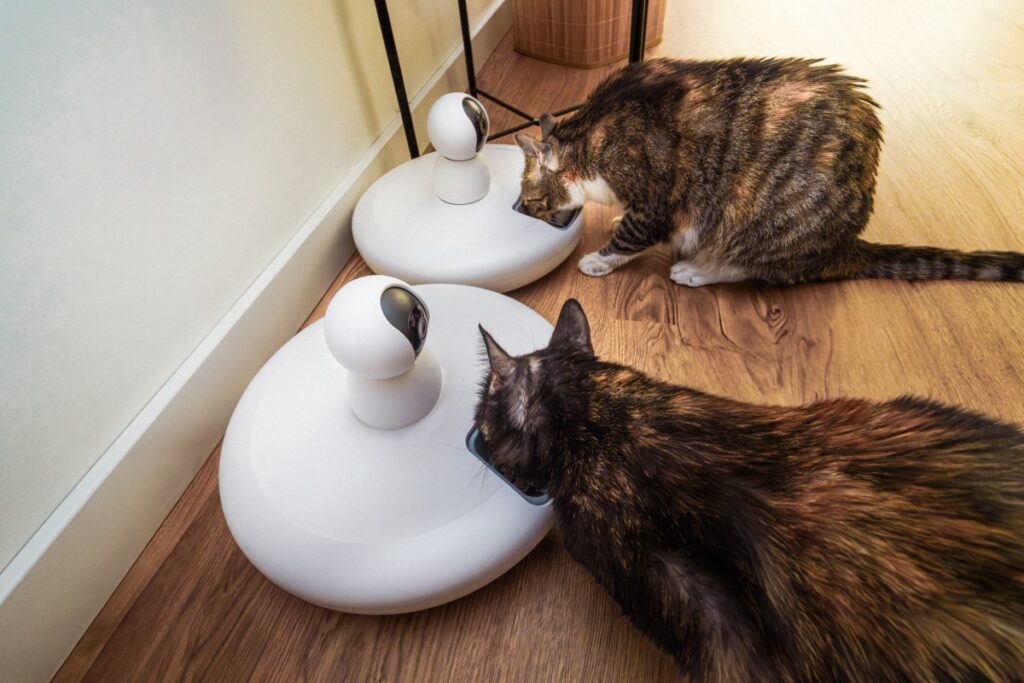In today’s digital world, more pet owners are embracing technology to help manage their pets’ care and keep up with busy lifestyles. Tracking tools, home cameras, and automated feeders have quickly become everyday essentials for many households.
A survey conducted by HostingAdvice.com found that 87 percent of 500 owners said technology improves a person’s ability to care for a pet. But, as smart homes become more common, how might they affect pet psychology? Newsweek spoke to two animal behavior experts to find out.
Too Much Predictability Can Create Stress
Veterinarian Dr. Julie Hunt told Newsweek that, when a household relies heavily on automated routines—such as automatic feeders, robot vacuums, timed lights, smart doors, and other predictable systems—life can become very consistent and repetitive for pets.
At first, that consistency may sound beneficial, but it can create unexpected problems.
“This can make any deviation from that routine more stressful for a pet,” Hunt said. “This can potentially feed a pet’s anxiety and diminish its confidence to face new situations and thus wear away at its independence.”
Robots vs. Relationships
Animal behaviorist Petrina Firth told Newsweek that, if remote feeders aren’t used properly, a dog may begin to “work for the robot,” weakening the bond between pet and owner.
Firth said: “The relationship between pets and their owners may suffer if pets think the robot is the provider of resources.”
However, Firth added that electronic devices can also offer valuable mental enrichment and prevent boredom when used thoughtfully.
Technology Isn’t the Enemy
Hunt also said that smart home devices aren’t inherently harmful to human-animal relationships.
“I don’t think smart home devices have any inherent impact on the bond between humans and their pets,” Hunt said, “except potentially if the smart devices decrease human workload and therefore increase the time and attention that humans spend on their pets, strengthening the human-animal bond.
“All relationships depend on the time spent cultivating them, and the human-animal bond is no different,” Hunt added.
Both experts said that they are not against integrating technology into pet care—especially as the pet tech industry continues to grow. The Bureau of Labor Statistics states the pet tech market reached $5.7 billion in 2020 and is expected to reach $20 billion by 2027.
Firth, who has more than 15 years of experience, added: “Dogs and cats are incredibly adaptable and smart learners. With the right approach, using gradual desensitization and building positive associations, pets can get genuinely comfortable with these devices.”
How To Introduce Smart Home Devices Without Causing Stress
Hunt, who works for Embrace Insurance in Cleveland, Ohio, shared several tips for pet owners looking to introduce new smart home devices safely:
- Introduce devices one at a time. Allow several days or a week between new additions. Avoid introducing multiple devices simultaneously.
- Be home during the first use. Observe your pet for signs of stress or anxiety. If these appear, temporarily stop using the device. For instance, timed feeders should be introduced well before a trip if they will be used while the owner is away.
- Maintain regular routines. Feeding, play, and exercise schedules should stay consistent while the pet adjusts to the new device.
- Provide a safe space. Ensure your pet has a comfortable area—such as a crate or a favorite room—where no new devices are operating.
- Start with short sessions. Gradually increase use only after the pet becomes more comfortable. For example, run a robot vacuum for a brief session at first, and slowly extend to cleaning the full home once the dog is accustomed to it.
Read the full article here

